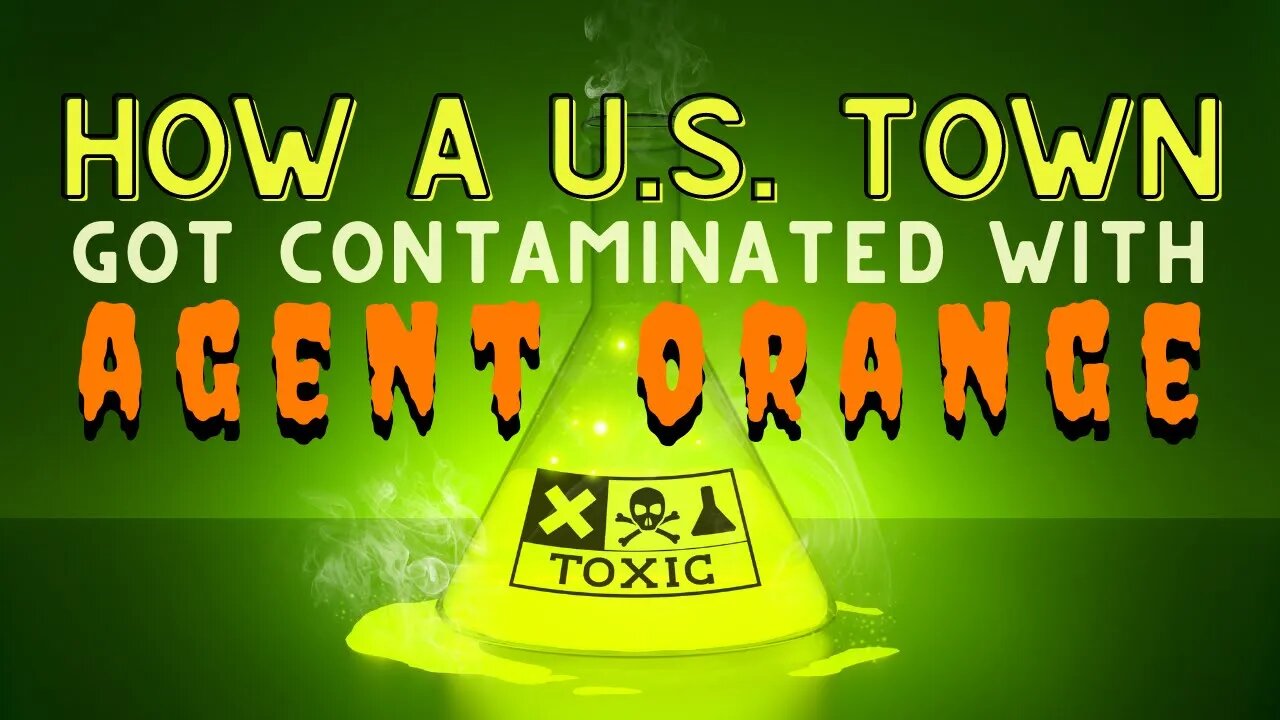Premium Only Content

How an American town got contaminated with AGENT ORANGE!!!
If you like my videos and want to help support my channel…consider visiting www.buymeacoffee.com/hachimama to make a small donation! ♡ ૮ ˶ᵔ ᵕ ᵔ˶ ა
♡ TAKEAWAYS ♡
SOURCE:: https://www.legendsofamerica.com/mo-timesbeach/
Times Beach, Missouri, was a town that was evacuated in 1983 due to dioxin contamination. The town was founded in 1925 and was a popular stop along Route 66. The town became a permanent community during the Great Depression when many property owners found it necessary to reside year-round in the small homes erected as weekend and vacation cottages. The population of Times Beach grew during the 1940s.
The town began to transition into a permanent community during the Great Depression when many property owners found it necessary to reside year-round in the small homes erected as weekend and vacation cottages. By the late 1960s, construction of Interstate 44 had begun and traffic was permanently rerouted to the 1956 bridge relegating the Meramec River U.S. 66 Bridge to local traffic. In the early 1970s, the town could not afford to pave its many dirt road streets and was plagued with a dust problem.
To solve the dilemma, the city hired waste hauler Russell Bliss to oil the roads in the town. What the city and the stable owners didn’t know is that Bliss had subcontracted to haul waste for the Northeastern Pharmaceutical and Chemical Company (NEPACCO) who operated a facility in Verona, Missouri.
During the Vietnam War, this facility had been a producer of Agent Orange and the waste clay and water removed from the plant contained levels of dioxin some 2,000 times higher than the dioxin content in Agent Orange. The EPA began to visit Times Beach in 1982, taking samples and tests that identified dangerous levels of dioxin in Times Beach soil.
In December 1982, the Meramec River flooded, further spreading the contamination through the town and other areas. On December 23, citizens were informed the entire city was contaminated. Soon, panic spread and every illness and animal deaths were attributed to dioxin.
President Ronald Reagan formed a dioxin task force to study the effects of the chemical and in early 1983; the EPA announced the town’s buyout for $32 million dollars. Two years later, in 1985, the entire population of more than 2,000 residents had been evacuated, with the exception of one elderly couple who refused to leave, and the town was dis-incorporated by executive order of the Missouri Governor.
The entire site was quarantined as residents moved on to other areas. Thousands of lawsuits were filed against Bliss, NEPACCO, and its subcontractors. Though Bliss’ practices were questioned, he was never implicated or convicted of a crime.
As to the lawsuits involving the chemical companies, no laws were in effect that regulated the disposal of hazardous waste at the time of the disposal. For years after the evacuation, the site sat silently behind barricades protecting the curious public from the toxic threat, while the Federal Government decided what to do.
During the years of 1996 and 1997, the government removed 265,000 tons of contaminated soil and debris from Times Beach and 28 other sites in eastern Missouri at a cost of $110 million dollars. An incinerator was built on the Times Beach site by a company called Syntex, which was the parent company of NEPACCO.
After the soil was incinerated, the incinerator was dismantled and the site was turned over to the State of Missouri. The 1983 buyout of the town by the federal government was the first time such a thing had ever occurred in our nation. The Times Beach tragedy brought dioxin to national attention and the EPA continued to locate and clean-up dozens of other toxic waste dumps throughout the nation. It also provided the push to pass new environmental laws regulating waste disposal.
Though dioxin has been connected to cancer, skin diseases, immune disorders, and birth defects, the long term effect on the exposed residents is still unknown. After the site was turned over to the State of Missouri with the EPA’s assurance that the land was safe, Missouri began to make plans for the site and the idea of the Route 66 State Park began to take shape. The 419-acre Route 66 State Park opened in October 1999.
Today the park includes a chunk of old Route 66 including the historic bridge across the Meramec River. The visitor center, housed in a 1935 roadhouse that was once called Steiny’s Inn, features a museum on the historic highway, as well as the history of Times Beach and the environmental cleanup.
The park itself provides more than seven miles of trails for hiking, biking, and equestrian use, where visitors can see a multitude of wildlife including turkey, geese, deer, and more than forty species of birds. Picnic sites abound and a boat ramp provides easy access to the Meramec River. The Route 66 State Park is located on I-44 at exit 266.
#history #disaster #conspiracy
-
 LIVE
LIVE
Yefune Kenizi's [PC] Gaming
3 hours agoGTAO - Heists Week: Friday w/ GamingChad
164 watching -
 1:23:02
1:23:02
Baked Linguini's Home Channel
1 hour agoToads Wearing Sunglasses - Let's Play Battletoads in Battlemaniacs
18 -
 LIVE
LIVE
Akademiks
4 hours agoDiddy Last Stance! Bail Hearing Live! Lil Durk Case update! Young Thug not getting back his SH*T?
4,491 watching -
 DVR
DVR
In The Litter Box w/ Jewels & Catturd
21 hours agoLegacy media CANNOT be trusted | In the Litter Box w/ Jewels & Catturd – Ep. 697 – 11/22/2024
21.7K15 -
 1:22:02
1:22:02
The Quartering
3 hours agoTrump BEATS NYC Felony Charges, New Woke Car Ads, WW3 Updates & More
59K39 -
 10:03
10:03
Colion Noir
3 hours agoKimber's First "True" Double Stack 1911 Isn't Just A Gun It's A Statement
9.45K11 -
 1:46:28
1:46:28
vivafrei
6 hours agoKeir Starmer Goes Full Tyrant! Canada Goes Full Gestapo! Trump Picks & MORE! Viva Frei Live
67.8K26 -
 1:10:50
1:10:50
The New American
3 hours agoIs The Deep State Trying to Trigger WW3 Before Trump Takes Office? | The New American Daily
13.9K7 -
 51:36
51:36
PMG
15 hours ago $4.10 earned"Hannah Faulkner and Sophia Lorey | FIRST AMENDMENT VIOLATED"
27K6 -
 LIVE
LIVE
Flexarot
3 hours agoGetting The Bansho Fan & Crane Level Capped! (Dragon Ball Online Galaxy)
138 watching